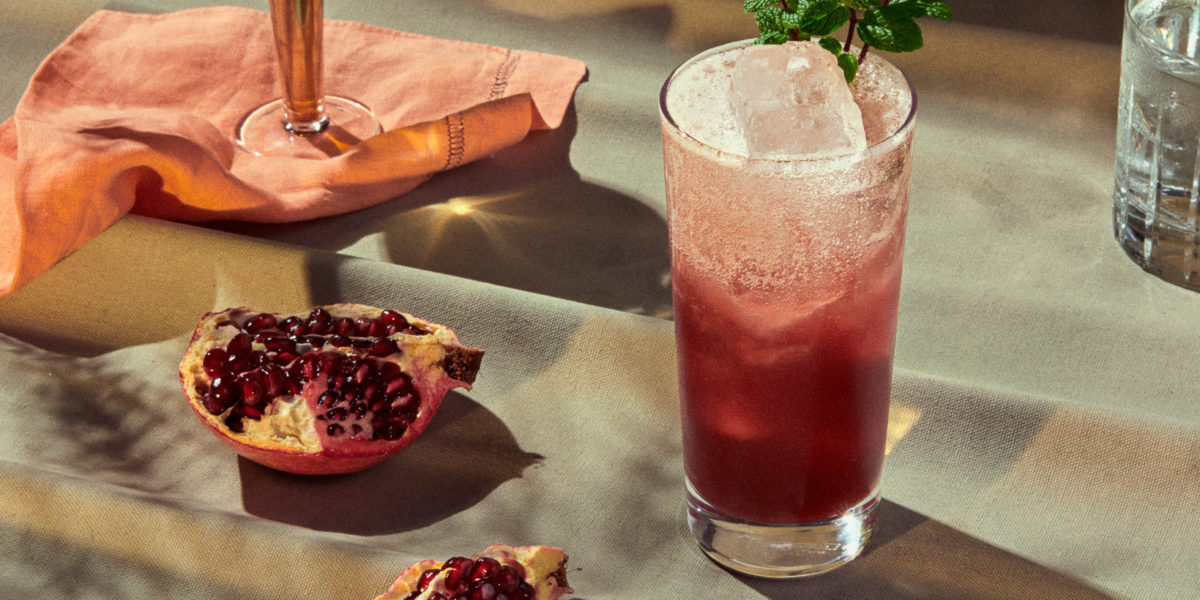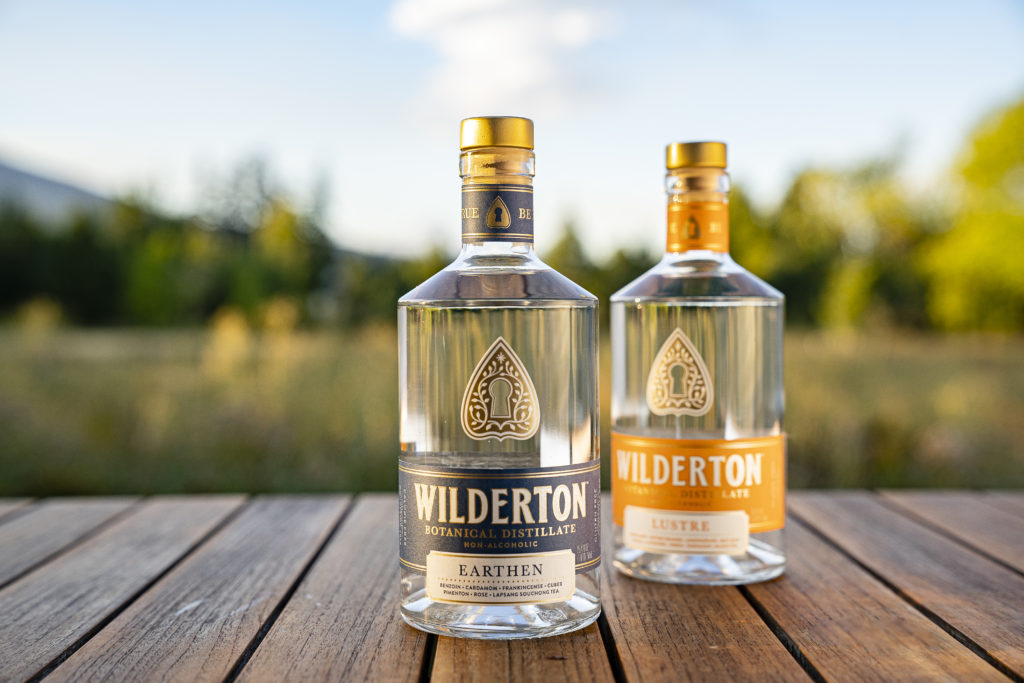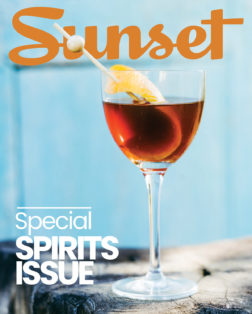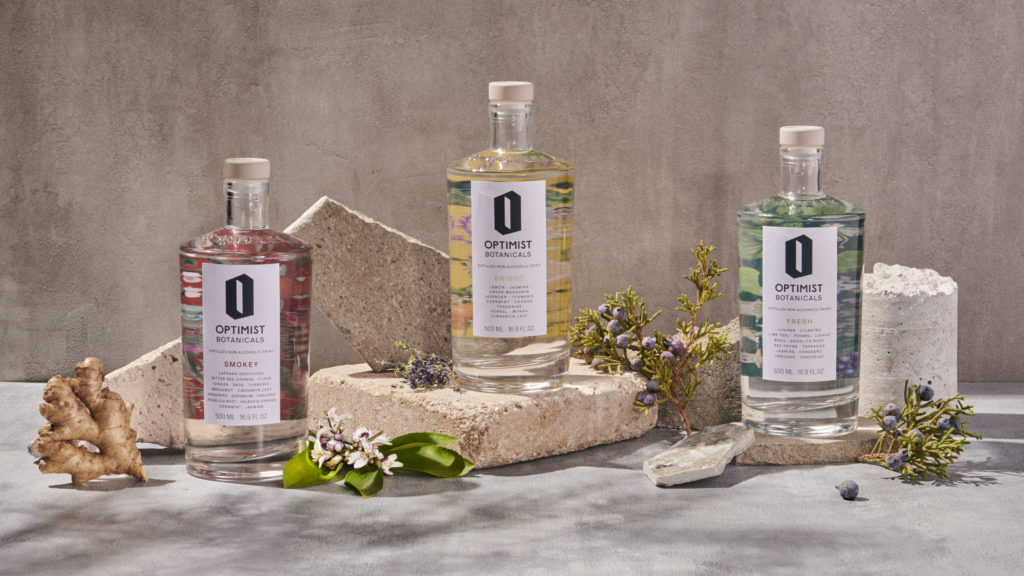Botanical Spirits Are Getting Better—That Means Nonalcoholic Cocktails Are, Too
We’re living in the golden age of alcohol-free cocktails.

Seth O’Malley’s basement is stocked with hundreds of tins and jars and airtight bags, each one filled with an aromatic plant sample. There’s white peppercorn and cardamom, clove and patchouli, plus some raw extracts not yet permitted for food consumption in the United States. It’s all part of the Portland distiller’s growing botanical library, or really laboratory, that lends itself to highly crafted nonalcoholic spirits.
Together with Oregon liquor veteran Brad Whiting, O’Malley is behind a line of spirits called Wilderton that stands out among a growing number of booze-free spirit brands. These one-of-a-kind distillates are made to elevate your cocktail game—whether you drink or not—as the botanical combinations add a range of flavors, from floral aromas to herbaceous, earthy notes.
While some in the zero-proof space seek to create substitutes for widely known alcoholic spirits (think Monday gin, Ritual rum, or Lyre’s American malt), this second type of product exists in a category all its own. Symphonic examples like Wilderton are being used in a wide range of cocktails, though they can also just be poured over ice and savored on their own. As more people make the decision to drink less—or not at all—you may start seeing more of them on the shelves at your local bottle shop, or on the menu at restaurants and bars.

Courtesy of Wilderton
“The broader vision here is just to create a new category of spirits that just happens to be nonalcoholic,” says Whiting, Wilderton’s CEO who traveled the globe for 14 years, sourcing spirits for Oregon’s Hood River Distillers. It’s all part of the evolution of modern cocktailing, Whiting adds, a concept that’s continuing to grow into “a full spectrum, from no- to low- to medium-alcohol” drinks.

Sunset’s 2022 Spirits Issue
More from this issue:
- Lemongrass, Mushrooms and Beyond: Plant Your Cocktail Garden Now
- Add a Rose-Flavored Twist to Your Cocktails with This California Rosolio
- The Espresso Martini Is Back: 3 Easy Recipes to Make Your Own at Home
- ‘More Like a Fine Wine’: West Coast Makers Want You to Be a Better Sake Drinker
You can find a bevy of options from Western brands that are pioneering this new tradition. Los Angeles-based Optimist is crafting nonalcoholic botanical spirits inspired by the landscapes of Southern California. Popular spirits brand AMASS now crafts a nonalcoholic bottle called Riverine that’s made with botanicals you might see in gin—coriander, orris root, and juniper, for example—but it is “not a gin proxy,” as the team writes on their website. “Rather, it is a nuanced, sophisticated spirit in its own right.”
While there’s much to be said around the sober-curious movement sweeping the West, Whiting says his broader goals center on “making cocktails more interesting.”
“It’s not a binary [alcoholic] or non-[alcoholic] conversation to me,” he continues. “It’s about the spectrum. You don’t have to choose to quit to have a new relationship with alcohol.”
What’s in Botanical Spirits?
Botanical spirits can range in flavor depending on the types of plants used. The team at Optimist utilizes ingredients commonly found growing around Los Angeles, like fennel, rosemary, thyme, basil, and more. “We didn’t definitely didn’t want to replace alcohol with other ingredients that aren’t great for mind or body,” say founders Lisa and Tommy Johnstone. “Each different botanical flavor has an important note to play in this particular symphony.”
Between 10 and 16 botanicals are used in each Optimist expression, which are aptly named Fresh, Smokey, and Bright. All are free of alcohol as well as sugar, additives, and unnatural flavorings. The Johnstones wanted their organic ingredients “to sing a capella,” as they say.

Courtesy of Optimist
There are also no flavorings in Wilderton’s two spirits, which include the more herb-driven Earthen and citrus-focused Lustre; it’s all raw botanicals from across the globe. “Really good spirits have a certain balance and a certain way that they unfold on the palette,” says O’Malley, who looks to perfumery as a “rigorous way to think about flavor composition.”
To understand how the Wilderton team chooses its ingredients, you first need to know how they make these spirits. They steep botanicals in an herbal tea that is then distilled in a cylindrical still, which burns at a lower temperature than those used for extended alcohol distillation. Because these botanicals are more delicate, they need to be preserved without being burned. “A lot of the ingredients that we landed on are ones that you don’t see so often in traditional spirits,” O’Malley says.
That’s because the Wilderton team is choosing those they feel can be extracted well with water, like rose petals and lemongrass, says O’Malley, a former tea barista turned founding distiller at the now-shuttered Townshend’s Distillery.
“Every ingredient is its own potpourri,” the founder adds.
How to Use Botanical Spirits
While the Wilderton founders were never interested in creating booze-free imitations of alcoholic spirits—”trying to make an OK copy of something that has a long tradition was never of interest to either,” Whiting says—they did approach their two expressions with cultural reference points in mind.
“Lustre, which is bright and light and floral, is going to fit more in a clear spirit,” Whiting explains, “like a vodka or a gin occasion.” Though, he adds, it’s not “not at all intended to taste like that.” Earthen, on the other hand, boasts deep spice notes and smoke. “While not in any way trying to be a whiskey or an aged spirit, [it] will often play very well in that same type of occasion,” Whiting says.
The Wilderton website is chock full of recipe ideas, from Earthy Beet, which pairs Earthen with beet and lemon juices plus ginger-honey syrup, to Rise and Shine On, featuring a cold-brew coffee base complemented by Earthen, cinnamon-infused simple syrup, orange bitters, and creamer. Your at-home mixologist move could be as simple as adding equal parts lemonade.
Over at Optimist, the Johnstones describe their spirits as “fluid in every sense,” the couple says. “People can create great non-alcoholic cocktails with them, but they work beautifully in low-alc creations, and even as an ingredient to improve on a standard cocktail.”
Fresh combines juniper berry and cilantro with lime peels, oregano, and more to create a gin-like sip. While Smokey uses ingredients like lapsang souchong (a tea with a naturally slightly smoky and sweet flavor profile), bitter red-orange, clove, geranium, habanero, and a handful of other botanicals to support or substitute expressions like mezcal or tequila.
Whether you’re all-in for Dry January, slowing down your drinking, or just looking to experiment, we collected some recipes from these two botanical spirits brands to help you start crafting your own unique cocktails.

